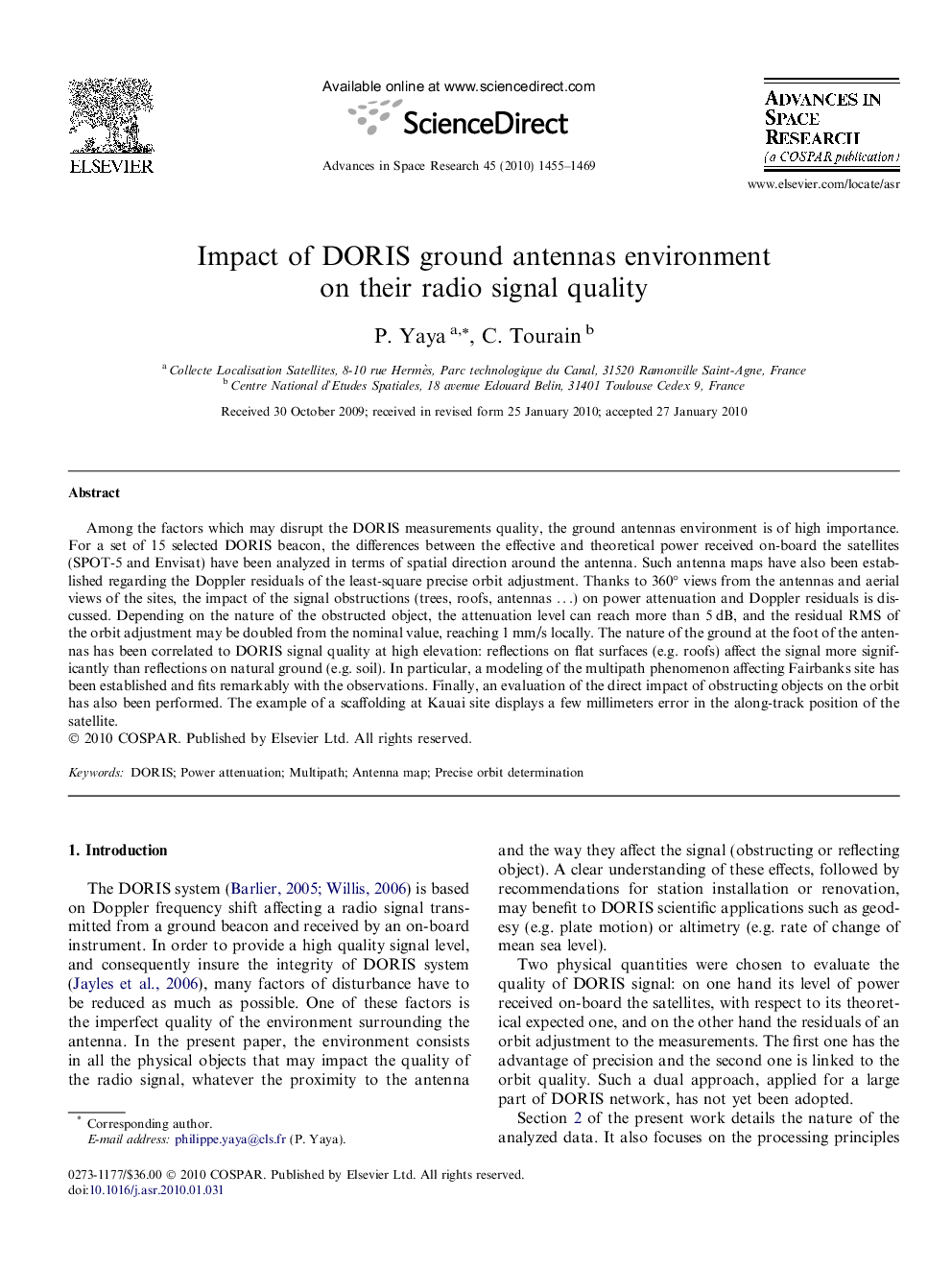| Article ID | Journal | Published Year | Pages | File Type |
|---|---|---|---|---|
| 1766253 | Advances in Space Research | 2010 | 15 Pages |
Among the factors which may disrupt the DORIS measurements quality, the ground antennas environment is of high importance. For a set of 15 selected DORIS beacon, the differences between the effective and theoretical power received on-board the satellites (SPOT-5 and Envisat) have been analyzed in terms of spatial direction around the antenna. Such antenna maps have also been established regarding the Doppler residuals of the least-square precise orbit adjustment. Thanks to 360° views from the antennas and aerial views of the sites, the impact of the signal obstructions (trees, roofs, antennas …) on power attenuation and Doppler residuals is discussed. Depending on the nature of the obstructed object, the attenuation level can reach more than 5 dB, and the residual RMS of the orbit adjustment may be doubled from the nominal value, reaching 1 mm/s locally. The nature of the ground at the foot of the antennas has been correlated to DORIS signal quality at high elevation: reflections on flat surfaces (e.g. roofs) affect the signal more significantly than reflections on natural ground (e.g. soil). In particular, a modeling of the multipath phenomenon affecting Fairbanks site has been established and fits remarkably with the observations. Finally, an evaluation of the direct impact of obstructing objects on the orbit has also been performed. The example of a scaffolding at Kauai site displays a few millimeters error in the along-track position of the satellite.
